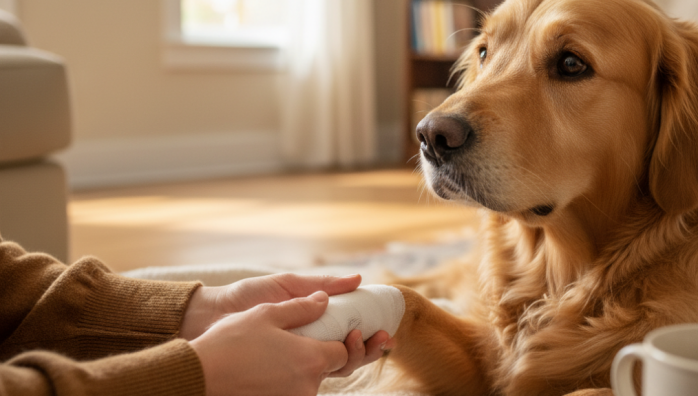Basic First Aid for Common Pet Injuries
by admin in Pet Care Basics 18 - Last Update November 25, 2025

I\'ll never forget the panic I felt when my dog, a boisterous Labrador, came bounding back from the woods with a nasty gash on his leg. My heart was in my throat. In that moment, I realized that while I had a first-aid kit for the humans in my house, I was completely unprepared for him. It was a wake-up call that pushed me to not just assemble a pet-specific kit, but to truly understand how to use it. Knowing these basics doesn\'t replace a vet, but it can make a critical difference in an emergency and give you a sense of control when you feel helpless.
My non-negotiable pet first-aid kit
Over the years, I\'ve refined my kit down to the essentials. I keep one in my car and one at home, and honestly, it has come in handy more times than I can count for minor scrapes and stings. Here’s what I always have:
- Gauze pads and non-stick bandages
- Self-adhering elastic bandages (the kind that doesn\'t stick to fur)
- Antiseptic wipes (pet-safe, without alcohol)
- Saline solution for flushing wounds or eyes
- A digital thermometer (remember, a pet\'s normal temperature is higher than ours)
- Tweezers for splinters or ticks
- A muzzle (even the gentlest pet can bite when in pain)
- Your vet\'s emergency contact information and the number for a pet poison control center.
Handling minor cuts and scrapes
The most common issue I\'ve faced is a cut paw pad or a scrape from a rogue branch. The first step I always take is to stay calm, which helps keep my pet calm. If the wound is bleeding, I apply gentle, firm pressure with a clean gauze pad. Once the bleeding slows, I carefully clean the area with saline solution or warm water to flush out any debris. I learned the hard way not to use hydrogen peroxide, as it can damage healthy tissue. For a small, clean cut, I\'ll apply a pet-safe antiseptic. If it\'s in a spot they can lick, I\'ll loosely wrap it with a non-stick pad and self-adhering bandage until we can see our vet. Of course, for any deep, gaping, or heavily bleeding wounds, my only move is to apply pressure and drive straight to the emergency clinic.
What i do for stings and insect bites
My cat once had a very unfortunate encounter with a wasp. Her paw swelled up to twice its normal size within minutes. The first thing I did was look for a stinger. If you see one, it\'s best to scrape it out with a credit card rather than pulling with tweezers, which can inject more venom. After that, a cool compress helped reduce the swelling. The most important thing here is to watch for signs of a severe allergic reaction—difficulty breathing, facial swelling, or collapse. If I saw any of those signs, I wouldn\'t hesitate to rush to the vet. This is just my personal experience, and I always think it\'s wise to call your vet for guidance, even for a simple sting.
My approach to paw pad irritations
Hot asphalt in the summer or salted sidewalks in the winter can be brutal on a dog\'s paws. I\'ve seen my dog start limping after a walk on a particularly hot day, and it\'s heartbreaking. My immediate action is to get him onto cool grass and then, once home, rinse his paws with cool water. It helps soothe the irritation. I avoid any human lotions or ointments. If I see blisters, redness that doesn\'t fade, or if he continues to limp, it\'s a clear sign that a professional opinion is needed. Being prepared for these common injuries has made me a much more confident and effective pet parent. It\'s about providing immediate comfort and care while knowing your limits and recognizing when it\'s time to let the experts take over.














